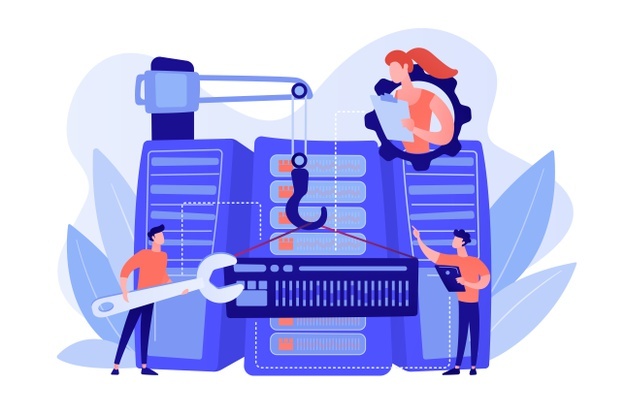In matters of reliability, people from various branches — manufacturers, customers, technicians, and lawyers — must often communicate together, especially when trying to find the answers to the following questions: ”What happened and why?“, ”Who is guilty of this accident?”, ”Who should pay the damages caused by the failure?”, or “How should the warranty be defined?”. Therefore, it is necessary that all participants understand certain technical terms in the same way. The most important expressions are explained in this section; more rigorous definitions can be found in the standards, such as ISO, IEC, and others, as listed in Appendix 2.
Reliability, in general, is the ability of an object (or process or service) to fulfil the demanded tasks and meet the specifications under given conditions. The specifications (i.e. technical parameters) must be written in the accompanying technical documentation. The conditions of use must also be specified, for example, the temperature range, in which the object will keep the assumed parameters.
Reliable operation is interrupted or terminated by failures.
Failure is an event leading to the loss of the ability to fulfil the demanded tasks and meet the specifications. Examples are fracture of a component due to overloading or fatigue, collapse of a structure, loss of electric contact, unacceptable deformations or wear, or some parameters out of the allowable limits.
Fault is a defect in the component or product. Faults can also be present in software.
Limit state. From the reliability point of view, every object can be either in an operational state or in a failed state. The border between both states is the limit state. Some objects fail suddenly and the failure is complete. The technical condition of other objects becomes gradually worse. For some time, however, they are able to fulfil their purpose, though in limited extent (with worse technical parameters or lower safety); the failure is partial. However, if certain parameters exceed the corresponding limit values, the object gets either unfit for further use or destroyed.
Reliability is a component of quality.
Quality is the ability of a product or service to ensure full customer satisfaction. The quality of an object (e.g. a car) can be judged with respect to several criteria, such as power, maximum speed, noise, fuel consumption, and color. Examples of quality in services are the possibility to provide quick connection to the Internet or to keep the timetable of trains or buses (and also the cleanliness in the vehicles, etc.). Reliability, in essence, is the ability to keep the quality with time. Nobody would say that a car is of good quality if it fails repeatedly during a short time.A further important characteristic is safety. Safety is the ability of an object not to endanger the human health or life, the environment, and properties. If an object fails, it must be repaired.
The word repair denotes the works for restoring full operability after a failure. However, the situation is more complex. Only some items are repaired, and we call them repairable. Some objects are unrepairable (e.g. electric lamp bulbs). If the filament has burned, the bulb must be replaced by a good one. Some items are repairable (e.g. an electric motor), but in some cases they are not repaired after failure but replaced by good ones, just to reduce the downtime of the object in which they were mounted (e.g. a gear box in a locomotive). If necessary, the repair of the failed part can be done at a suitable time elsewhere. For some mass-produced items, their replacement by new ones is cheaper than repair. Therefore, one often speaks of repaired or unrepaired objects. A more general expression than repair is renewal, which means putting the object back into the condition as if it “were new”. Renewal can be achieved by repair, replacement, or maintenance.
Maintenance comprises cleaning, exchange of oils and dirty filters, tightening of locked screws and other adjustments, and repair of minor faults or damaged paints – generally small works for restoring full operability.
Availability is the readiness for correct service. In complex structures with long life (e.g. a car or a locomotive), failures inevitably appear from time to time. In this case, the term availability is used, which considers the times of operation as well as of repairs. Later, it will be shown how availability can be calculated and used for reliability evaluation. All these terms together form the so-called dependability. This is a general term used to characterize availability and factors that
influence it: reliability, maintainability, and maintenance support. Briefly,
· availability = readiness for correct service,
· reliability = continuity of correct service (i.e. without failures),
· safety = absence of catastrophic consequences for the users and the environment,
· maintainability = ability of the object to be maintained (and repaired), and
· maintenance support = technical and organizational means enabling maintenance and repairs.
In this context, reliability has narrower meaning than in the aforementioned definition. When speaking of reliability, two kinds should be distinguished: inherent and operational.
Inherent reliability is the reliability “built-in” into the object during the design stage by using an appropriate concept, materials and dimensions, and also by suitable conditions of manufacture or assembly. There are many pieces of evidence that it is the design that is most important for achieving high reliability. Some means will be shown later.
Operational reliability is the reliability achieved in operation. It depends on the way of operation and maintenance. Reckless operation and poor maintenance can significantly shorten the life of every object. However, neither very good maintenance can mitigate the faults and weaknesses caused by improper design.


